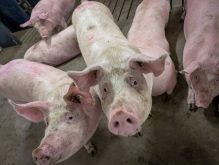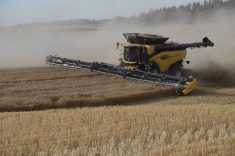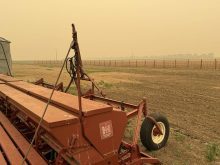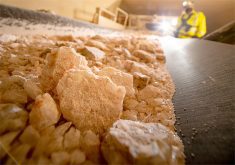COALDALE, Alta. — The 150 dairy cows at Elk Creek Dairy bed down in material that is soft, fluffy and brown.
It used to be their manure, but a fan separator system has allowed dairy owner Brian Stoutjesdyk to recycle the manure and drastically reduce his bedding purchases.
He used to buy about 18 truckloads of sawdust per year, but the amount of manure he handles has dropped by 30 percent since getting the fan separator because less bedding material is in the total waste.
“We did it to reduce the manure output and to create our own bedding,” Stoutjesdyk told a recent County of Lethbridge agricultural tour group.
Read Also
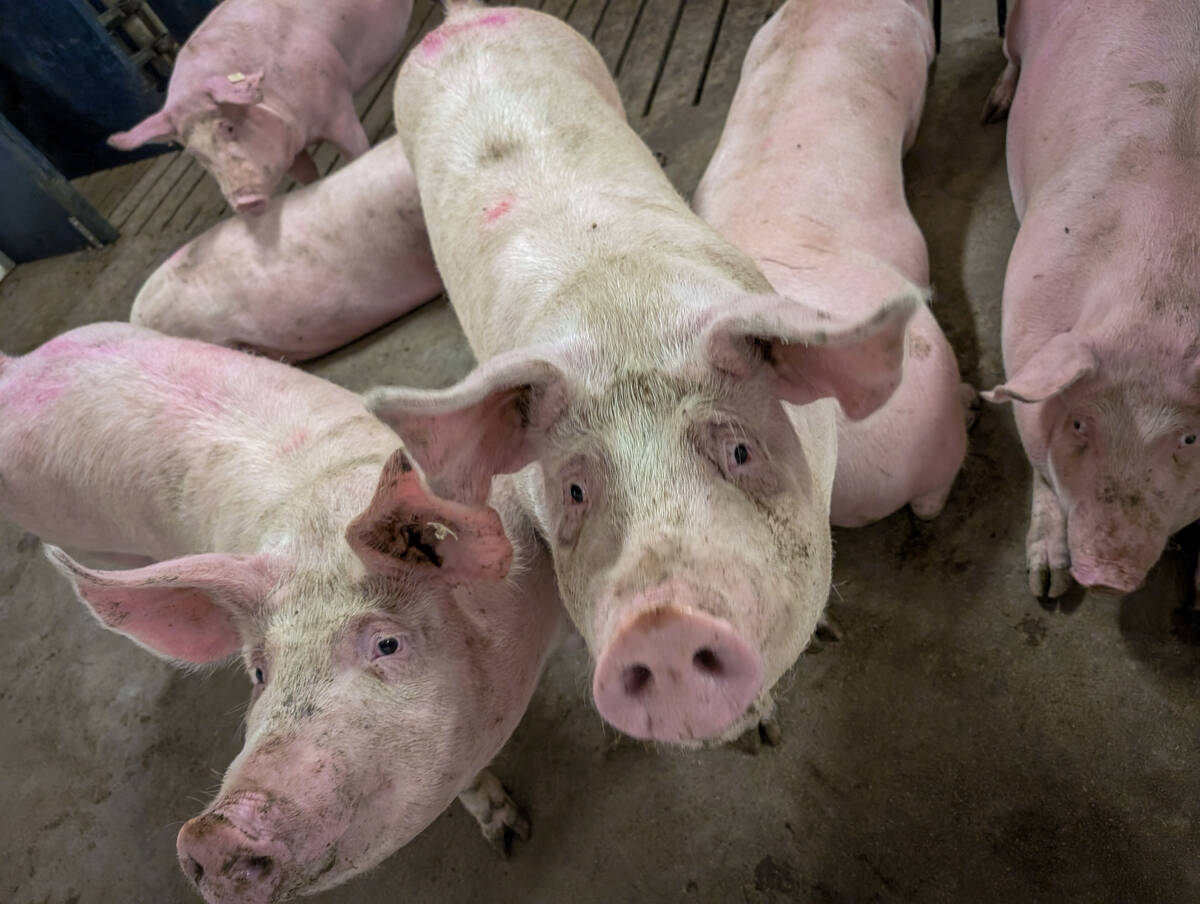
Pork sector targets sustainability
Manitoba Pork has a new guiding document, entitled Building a Sustainable Future, outlining its sustainability goals for the years to come.
Fresh liquid manure, collected in a pit beneath the barn floor, is pumped to the separator, where 40 percent of the liquid is removed as the fibres are squeezed.
The liquid goes into earthen manure storage, and Stoutjesdyk hopes to set up a fertigation system next year to spread it on his fields. Liquid manure is now injected into his 800 acres of farmland about three times a year.
The fibre material, which is the silage and forage digested by dairy cows, is conveyed to an outside pile and composted. Once sufficiently dry, it is used to bed cows in the barn.
There is more than enough to bed the cows. The rest is light and can be economically trucked to more distant fields. Removing the liquid removes much of the odour, and the compost process does the rest.
“It reduced my carbon footprint hugely,” said Stoutjesdyk.
Other benefits include reduced soil compaction and lower fuel expenses.
Klaus Santrau of South Country Livestock Equipment said Stoutjesdyk’s system could handle manure from up to 1,000 cattle, although it is one of the smaller units available to dairy farms. Such systems are becoming more economical as technology improves.
Dwayne Rogness, extension specialist for the County of Lethbridge, helped Stoutjesdyk apply for grants through the federal Growing Forward program. He received $50,000 to help pay for the $120,000 system.
“We have a lot of intensive livestock operations here so we’re trying to really concentrate on the manure and manure applications to land,” said Rogness.
He encouraged others to take advantage of government funding to improve the sustainability of their operations.
“You tell me anybody that can’t use $50,000 to set up a program,” he said.
Stoutjesdyk said most farmers are eager to embrace new technology once they see the benefits. Ideally, his manure system would one day include biogas generation, but right now he doesn’t consider it economically feasible for a dairy of this size.



